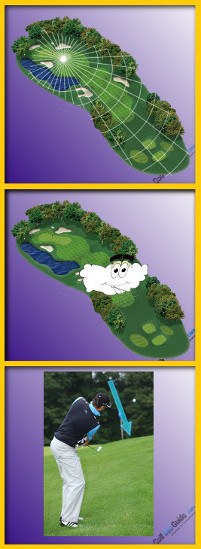
The so-called “member's bounce” isn't really a lucky break afforded to a golf course's regulars. Odds are, the member in question knew exactly what he was doing.
In golf, a little local knowledge goes a long way – sometimes literally. Knowing which mounds will kick balls down the fairway, which greens break more than they appear, where there's more room than meets the eye… All these tidbits can add up to lower scores.
In Part I of this feature, we explained how to examine your home course (or any course you play often) for factors that can influence results. Let's continue with a few more examples.
Find major topographical features on course or nearby
Water runs downhill, right? The golf ball, being subject to the same laws of gravity, follows suit. If a course lies next to a mountain range or foothills, putts will tend to break away from the higher elevations. A large body of water, such as an ocean or lake, will have the opposite effect.
This is especially true on older courses (built pre-World War II). Without the aid of modern earth-moving equipment and sophisticated underground drainage, architects had to create holes which followed slopes naturally.
Since you can't always see subtle terrain features, it's good to learn the orientation of the holes. Identify which direction is north, west, etc, then determine where the big hill or valley lies in relation to each one. If the back of your scorecard includes a course map, write “N” on the north side in case you lose your bearings.
Where is the prevailing wind?
Play a course a few times and you'll probably notice that the same holes usually play downwind, into the wind and so forth. This is need-to-know info when you can't actually feel the wind – such as on a par 3 where trees block the teeing area. If you know the hole's orientation and the wind direction, you'll have a clue to how any un-felt breeze may affect your shot.
Note the effect of hills
Most courses feature a hole or two that seem to defy the yardage book – you're always coming up short or long. Most likely, there's a subtle grade that has a bigger impact than you'd expect. As a general rule, every yard of elevation change (up or down) between you and the target equals a yard of distance. An uphill slope of 8 yards turns a 145-yard shot into 153, and so on.
If you continually miss-club on a particular hole, note how far you typically miss by and adjust future club selection.





